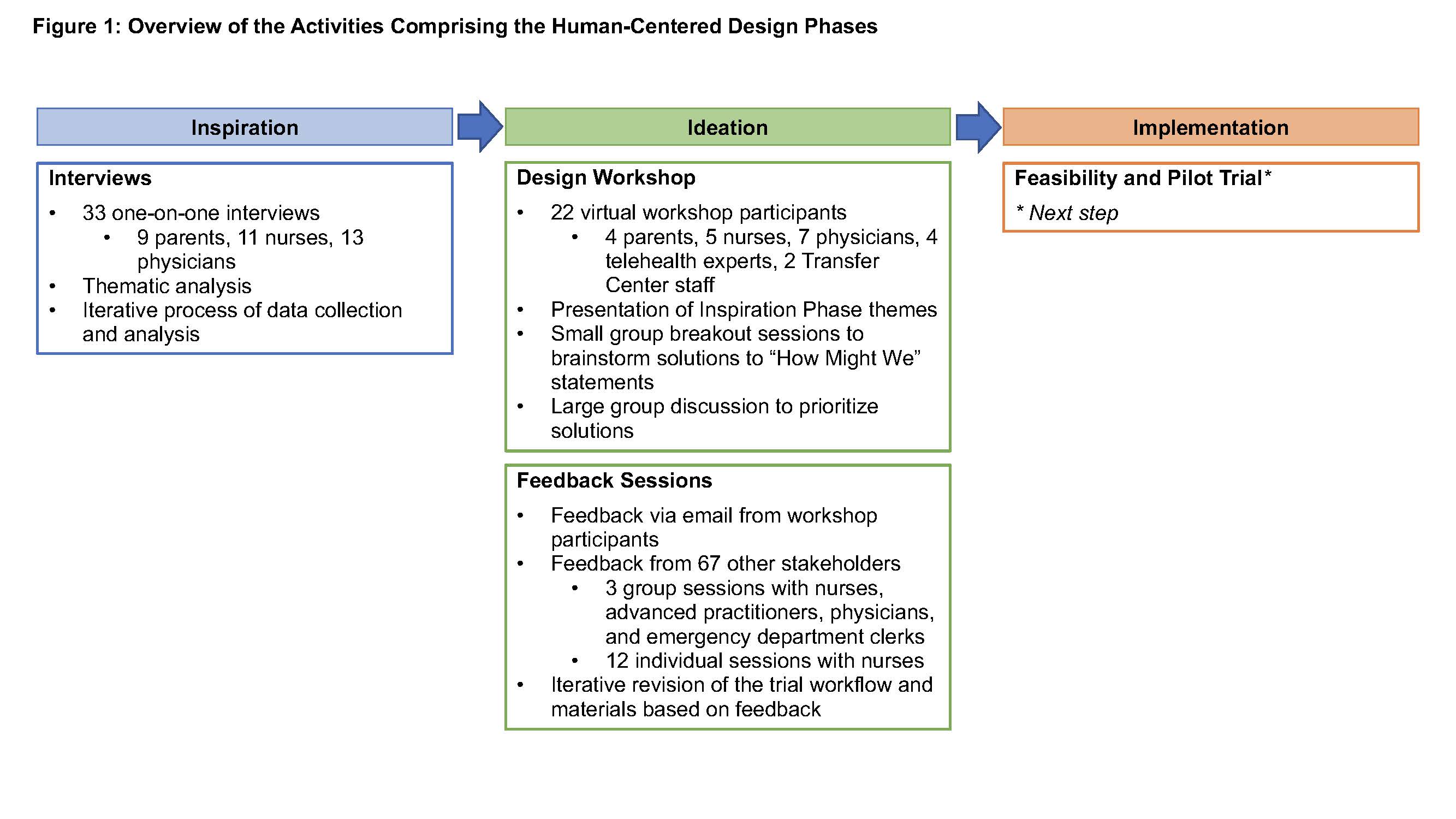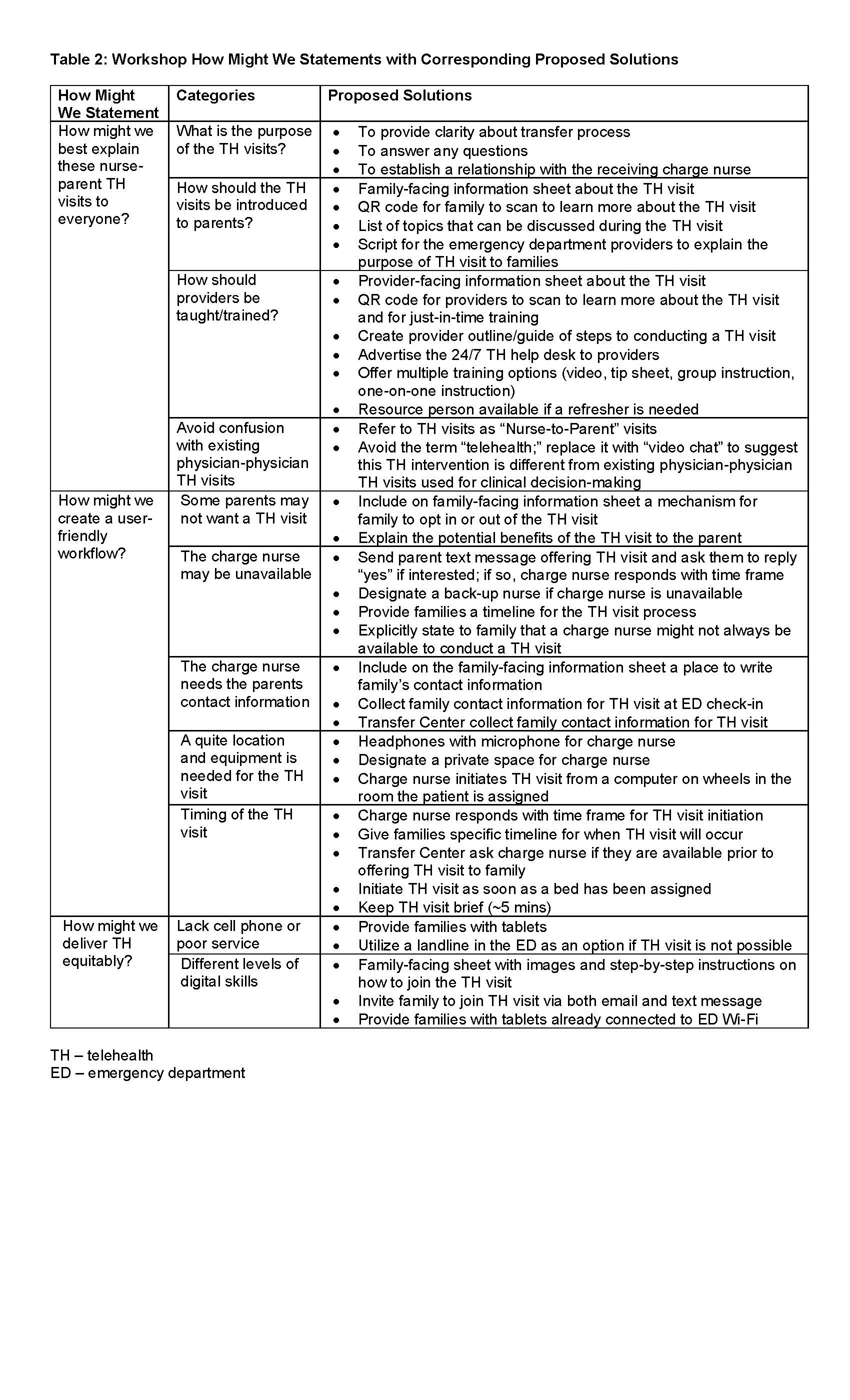Telemedicine/EHR/Medical Informatics
Telemedicine/EHR/Medical Informatics 3
652 - Using Human-Centered Design to Develop a Nurse-to-Family Telehealth Intervention for Pediatric Transfers
Publication Number: 652.456

Jennifer Rosenthal, MD, MAS (she/her/hers)
Associate Professor
University of California Davis Children's Hospital
Sacramento, California, United States
Presenting Author(s)
Background:
Interventions to improve provider-to-family communication during pediatric hospital-to-hospital transfers are needed. Telehealth that permits live audio-video connection between receiving providers and families prior to transfer is a promising solution to enhance communication and family-centered care. To use the human-centered design approach to develop a feasibility and pilot trial comparing nurse-to-family telehealth communication to usual care for pediatric interfacility transfers. We conducted the 1st and 2nd phases of a human-centered design process (Figure 1). The inspiration [1st] phase consisted of a thematic analysis of parent, physicians, and nurse interviews. We used convenience and snowball sampling to recruit participants. Five team members individually coded transcripts and wrote analytic memos. The team met weekly to discuss memos, update a construct summary sheet, and identify emerging themes. The team adapted the themes to develop “How Might We” statements to be used in the ideation [2nd] phase. This 2nd phase consisted of a multidisciplinary stakeholder design workshop, where stakeholders brainstormed solutions to the “How Might We” statements. Our team incorporated knowledge gained from the workshop to draft the trial workflow and materials. These materials were iteratively revised based on feedback sessions until stakeholders shared that no further improvements were needed. We interviewed 9 parents, 11 nurses, and 13 physicians. Four themes emerged supporting the promise of a nurse-to-family telehealth intervention, the need to clearly message the intervention purpose, the value of a user-friendly workflow, and the importance of ensuring the intervention equitably benefits diverse populations. Themes with supporting quotes are provided in Table 1. Table 2 shows the “How Might We” statements with a summary of the proposed solutions from the 22 workshop participants. Workshop participants included 4 parents, 5 nurses, 7 physicians, 4 telehealth experts, and 2 transfer center staff representing four different hospitals. Iterative adaptations were made to the trial workflow and materials until feedback from workshop participants plus 67 additional stakeholders supported no additional improvements were needed. Use of the human-centered design inspiration and ideation phases facilitated a stakeholder-engaged process to develop a nurse-to-family telehealth intervention. This intervention will subsequently be tested in a future implementation phase as a feasibility and pilot trial.
Objective:
Design/Methods:
Results:
Conclusion(s): 
.jpg)

